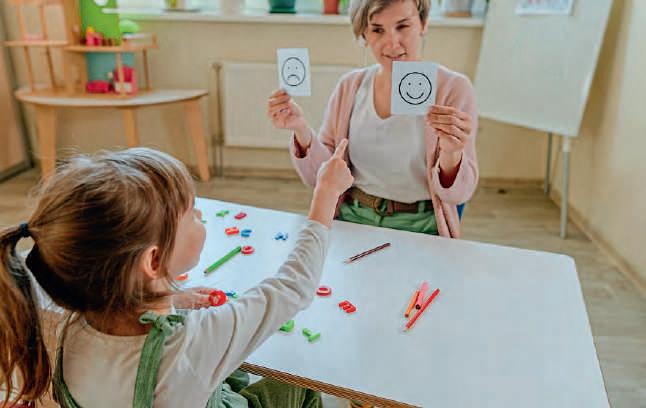
4 minute read
Repurposing SEN support strategies
16 / FEATURE ➜ TEACHING & LEARNING
Repurposing SEN suppor t strategies
Victoria Annan, lead of additionally resourced provision (ARP) for autism at Chalgrove Primary School, talks about how techniques she uses to support autistic children can benefit all mainstream pupils.
o two children with SEND N had the same experience of learning through lockdown. At Forest Lodge, Chalgrove Primary School’s additionally resourced provision for autistic children, some pupils were in school regularly during the pandemic while others continued their learning remotely.
All pupils were given access to a rich curriculum, which included reading, writing, mathematics, science and physical development which was tailored to meet the needs of different pupils. We also supported the children with key life skills and self-care. Children’s interests were incorporated into their learning where possible and pupils completed fortnightly projects on a topic of their choice.
Some of our pupils with SEND continued to access learning with their mainstream class remotely and used technology to work collaboratively with their peers.
What we gleaned from the experience of teaching through lockdown was that many of the strategies we put in place to support learning, independence and wellbeing for children with SEND worked just as well for helping all mainstream learners progress.
There are three key areas where one technique, using visual aids in and around the classroom, can benefit all children including those with SEND.
BUILDING VOCABULARY
Children have come through several lockdowns, often with limited interactions and reduced opportunity for life experiences. As a result, many have not developed the vocabulary they need to progress and require extra help now they are back in school.
We typically use symbols from Widgit to support the vocabulary development of children with SEND as well as other children across the school. They provide simple visual prompts for pupils who struggle to process written or spoken words.
Symbols are incorporated into visual timetables, for example, with images to represent different subjects. This can be reassuring for a child with autism but can be equally effective if a pupil struggles with
anxiety, as the children can quickly see what is being taught next and when they will be having lunch or taking a learning break.
Our staff use handheld symbols too, such as ‘wash your hands’ or ‘finished’, which are simpler to digest for children who may feel overloaded when attempting to decipher spoken or written instructions. These symbols are particularly important when a child is feeling dysregulated.
The combination of text and symbolic imagery supports all children to process information and feedback from their teacher in a busy classroom environment and this helps them better engage in what’s going on.
ENCOURAGING INDEPENDENCE
Visual symbols can help learners become more independent. We provide some children with symbolic routines to help them navigate the school day without the support of an adult. So, for play time, we might create a symbolised routine for ‘get your coat, put it on, stand in line, go out the classroom door, go onto the playground’ with matching images and text. Many children find symbolised routines comforting and use them regularly as aide memoires.
Symbols appear on signage around the school too, helping all pupils to get to where they need to be. They can support children to independently collect and return items such as classroom or sports equipment to the correct place.
Another effective way we’ve used symbols is on the school lunch menu. They can be just as effective at helping non-verbal or minimally verbal children make meal choices as they are for those who are nervous or shy about speaking to others, preventing them from feeling isolated.
BIO
V I C T O R I A A N N A N
Victoria is the lead of additionally resourced provision (ARP) for Autism at Chalgrove Primary School. To find out more about Social Stories or symbols software, visit
https://bit.ly/2HffknA and https://bit.ly/3PWvGUf
S U P P O R T I N G E M O T I O N A L W E L L B E I N G
Symbols can be a powerful way to support the emotional wellbeing of any child by helping them to express how they are feeling when they are unable to verbalise emotions.
Emotion cards which include symbolic facial expressions help children who have limited vocabulary to let their teacher know if they are feeling sad or frightened. They simply point to the emotion they are experiencing, and the teacher can step in quickly to help.
Unexpected change has become a common feature of school life for all children over the past two years. Another way we have addressed this at Chalgrove is with Social Stories, a concept developed by autism expert Carol Gray in the 1990s.
They use simple language to explain a social event, situation, or activity and are typically in the format of a short story, comic strip, book, or poster making them easy to share with children. While often used in autism provision, we now incorporate them more widely to support all children through changes like a new member of staff or a classmate moving schools.
Schools will stop at nothing to identify and address the issues around learning recovery. At our school, the visual prompts and symbols we use to support pupils with SEND also help us ensure every child gets the best possible chance to achieve their full potential.







